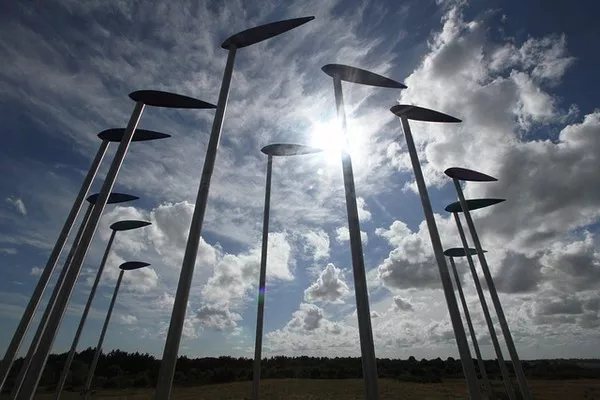Anemometers, devices designed to measure wind speed and direction, have become indispensable tools in various industries and scientific fields. From meteorology to renewable energy, anemometers play a crucial role in gathering data that aids decision-making and enhances our understanding of environmental conditions. In this article, we explore the 10 key uses of anemometers and how they contribute to diverse applications.
1. Meteorology: Weather Forecasting and Research
One of the primary applications of anemometers lies in meteorology, where they are instrumental in weather forecasting and research. Accurate measurement of wind speed and direction is vital for understanding atmospheric dynamics, predicting storms, and issuing timely warnings. Anemometers provide essential data that meteorologists use to create detailed weather models, enabling more accurate predictions and improved preparedness for extreme weather events.
2. Aviation: Ensuring Safe Flight Operations
In the aviation industry, anemometers are critical for ensuring safe flight operations. Pilots rely on real-time wind speed and direction data to make informed decisions during takeoff, landing, and in-flight. Understanding wind patterns helps optimize fuel efficiency, improve aircraft performance, and enhance overall safety. Anemometers installed at airports and on aircraft contribute to the precision of weather-related decision-making in the aviation sector.
3. Renewable Energy: Wind Energy Assessment
Anemometers are fundamental tools in the field of renewable energy, particularly in the assessment of wind energy potential. Wind turbines are designed to harness the kinetic energy of moving air, and anemometers play a pivotal role in selecting optimal locations for wind farms. By collecting long-term wind data, anemometers assist in identifying sites with consistent and strong wind patterns, maximizing the efficiency of wind energy projects.
4. Environmental Monitoring: Air Quality and Pollution Control
Anemometers are valuable instruments in environmental monitoring, aiding in the assessment of air quality and pollution control. By measuring wind speed and direction, these devices help track the dispersion of pollutants in the air. Anemometer data, when integrated with other environmental sensors, contributes to the development of strategies for minimizing the impact of industrial activities on air quality and public health.
5. Building Design and Construction: Wind Load Analysis
In the realm of civil engineering and architecture, anemometers play a crucial role in assessing wind loads on buildings and structures. Understanding the wind forces acting on a structure is essential for designing buildings that can withstand varying weather conditions. Anemometer data guides engineers in optimizing structural designs, ensuring the safety and stability of buildings, especially in areas prone to high winds or extreme weather events.
6. Sports and Recreation: Wind-dependent Activities
Anemometers find applications in sports and recreational activities where wind conditions significantly impact performance. Activities such as sailing, kite flying, and paragliding rely on accurate wind speed information for safety and enjoyment. Sports like competitive sailing use anemometers on boats to gauge wind conditions, allowing participants to make strategic decisions based on real-time data.
7. Agriculture: Crop Management and Pest Control
In agriculture, anemometers contribute to crop management and pest control. Wind patterns affect the dispersal of pollen, seeds, and pesticides. Anemometer data aids farmers in optimizing planting strategies, ensuring effective pollination, and managing the application of agricultural chemicals. Understanding local wind conditions is crucial for preventing the unintended drift of pesticides, promoting sustainable farming practices.
8. Research and Education: Scientific Studies
Anemometers play a vital role in scientific research across various disciplines. Whether studying atmospheric dynamics, climate change, or wildlife behavior, researchers rely on accurate wind data to draw meaningful conclusions. Anemometers are valuable tools in educational settings, allowing students to engage in hands-on learning experiences and gain practical insights into meteorology, physics, and environmental science.
9. Outdoor Events: Safety and Planning
For organizers of outdoor events, anemometers are essential tools for safety and planning. Whether coordinating music festivals, outdoor weddings, or sports events, understanding wind conditions is crucial to ensure the safety of attendees and the success of the event. Anemometer data helps organizers make informed decisions about stage setups, tent installations, and overall event logistics, minimizing the risk of accidents caused by strong winds.
10. Offshore Operations: Marine and Oil Exploration
In offshore industries such as marine transportation and oil exploration, anemometers play a crucial role in ensuring safe and efficient operations. Ships, oil rigs, and other offshore structures are susceptible to wind forces and wave dynamics. Anemometer data helps maritime and oil industry professionals make informed decisions regarding route planning, vessel stability, and overall safety in challenging offshore environments.
See Also How Do Anemometers Work?
Conclusion
The versatility of anemometers extends across a wide range of industries and scientific domains, making them indispensable tools for professionals and researchers alike. From meteorology to renewable energy, and from aviation to agriculture, anemometers contribute invaluable data that enhances our understanding of the environment, improves safety, and drives innovation across diverse sectors. As technology continues to advance, anemometers will likely play an increasingly pivotal role in shaping our response to environmental challenges and optimizing various aspects of human activity.

